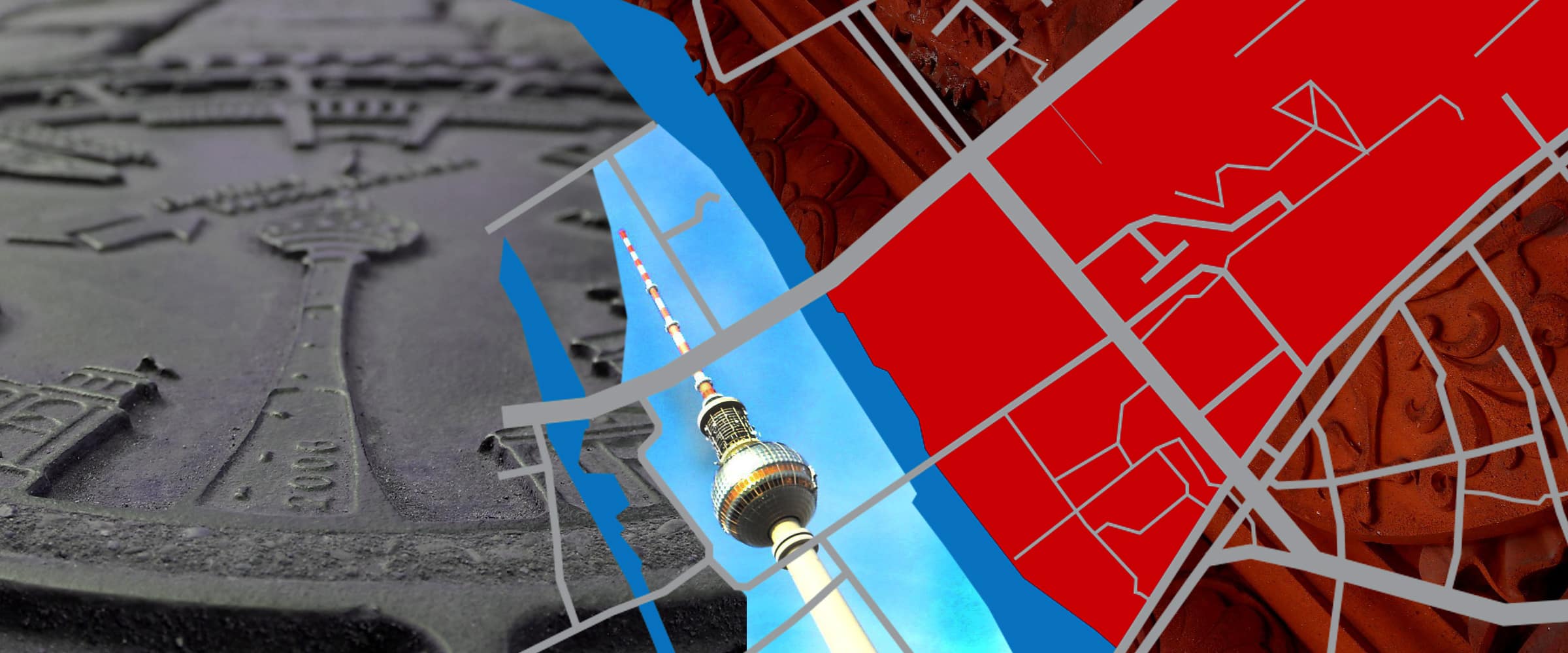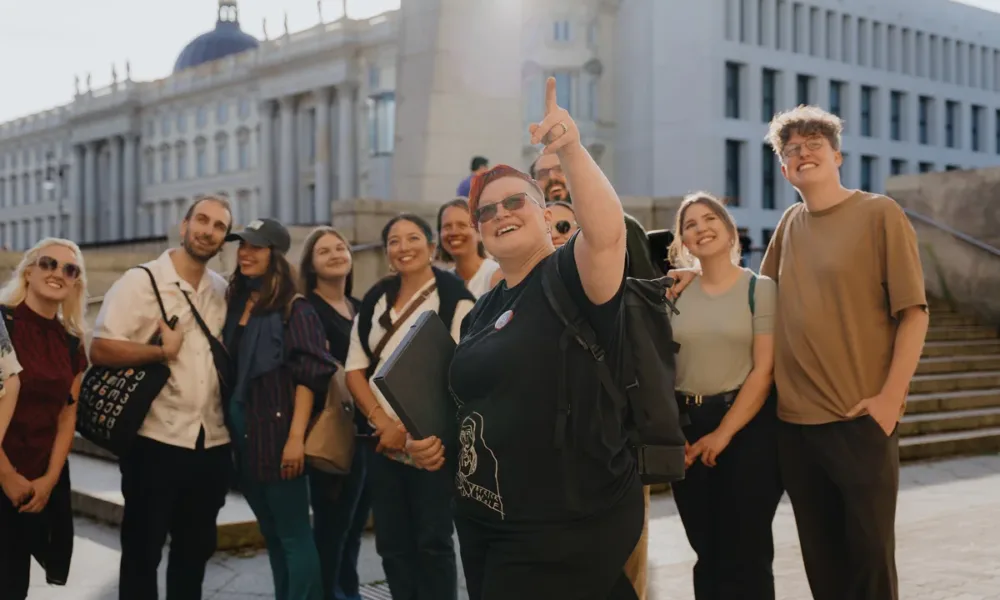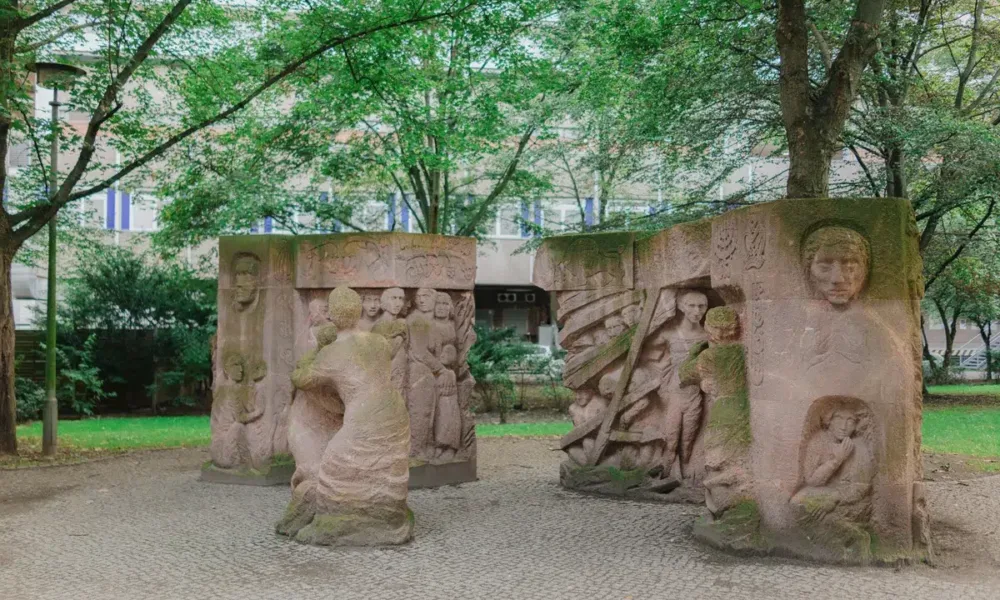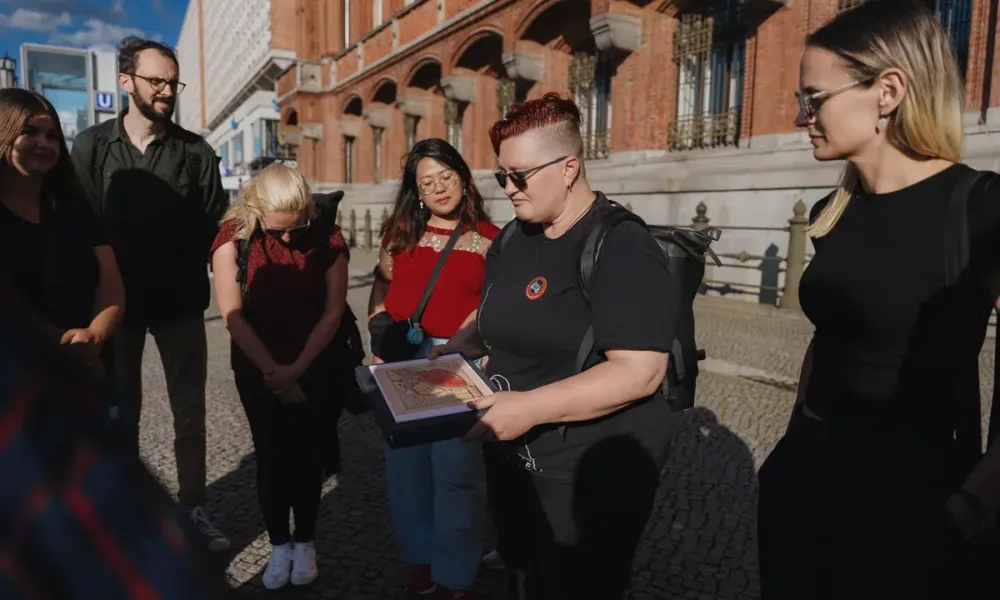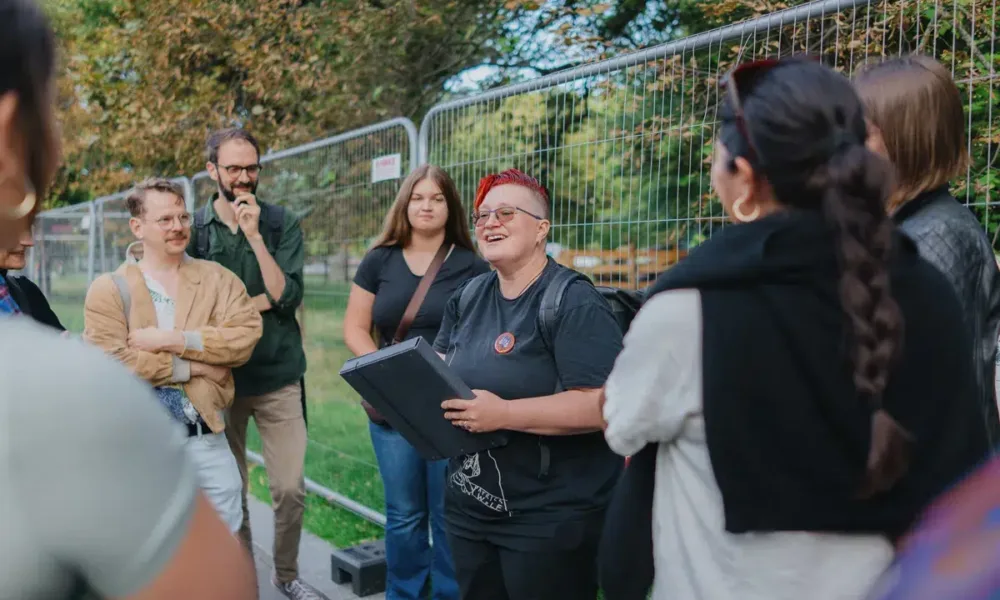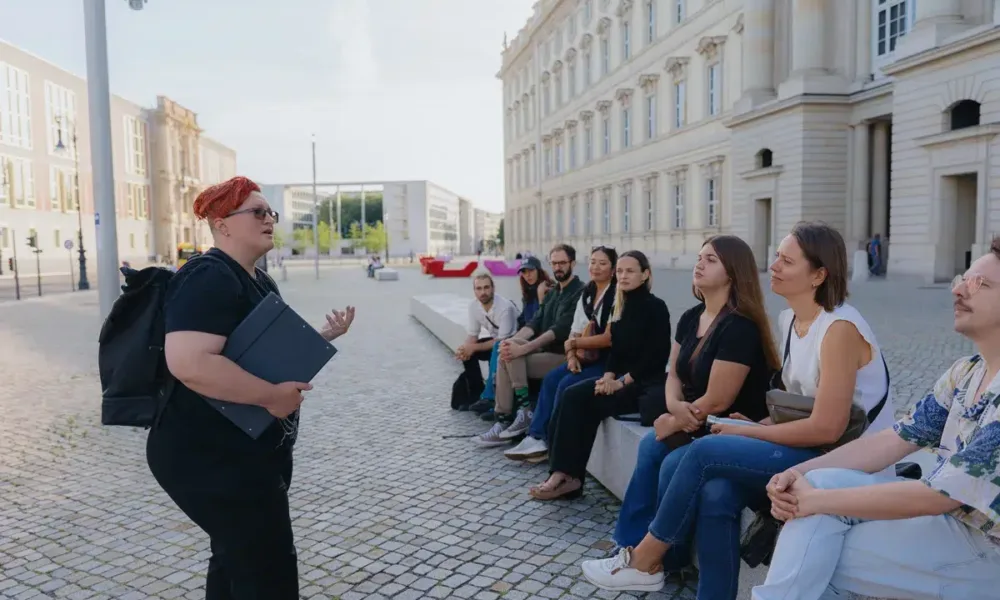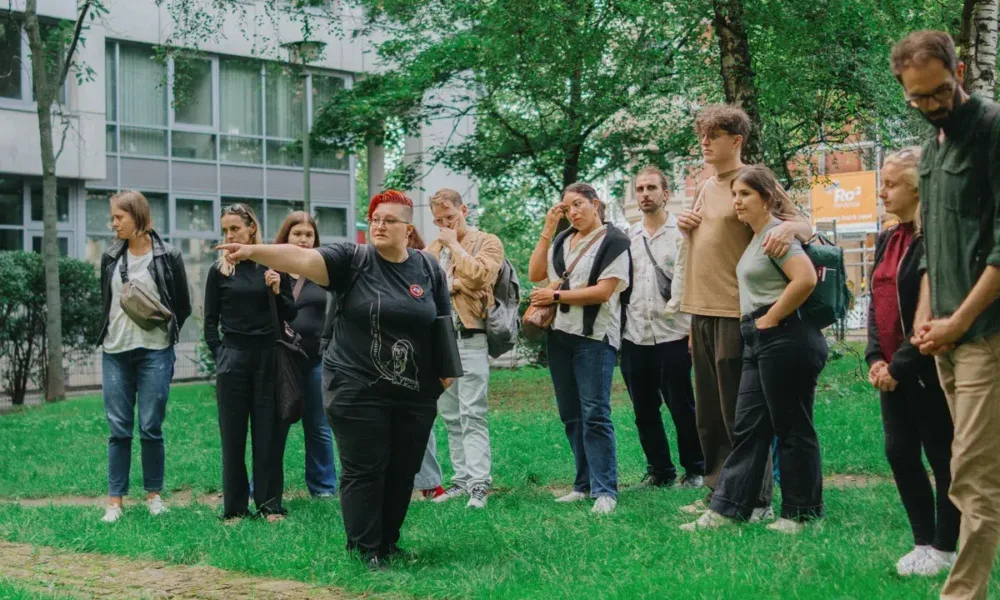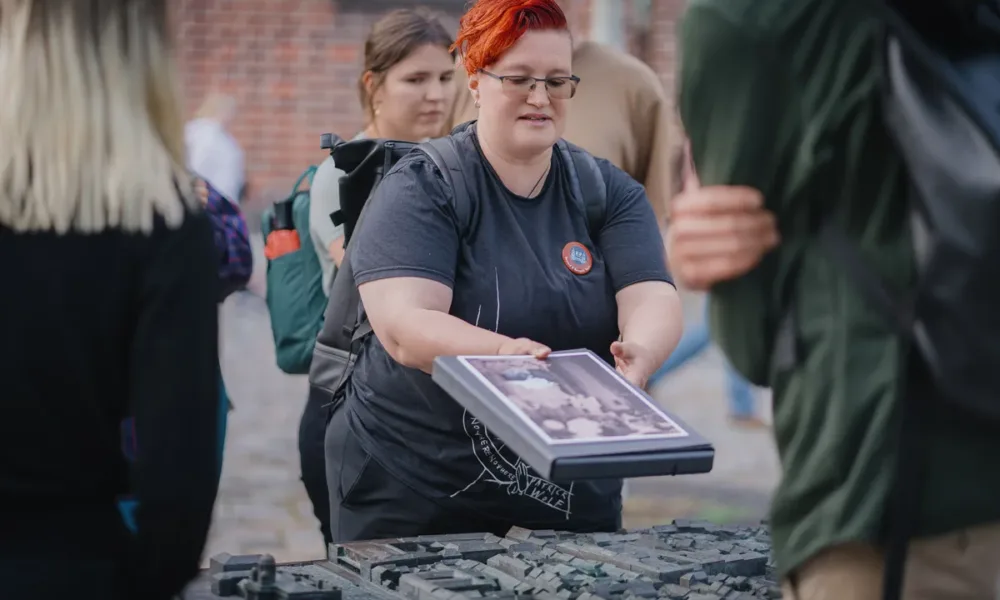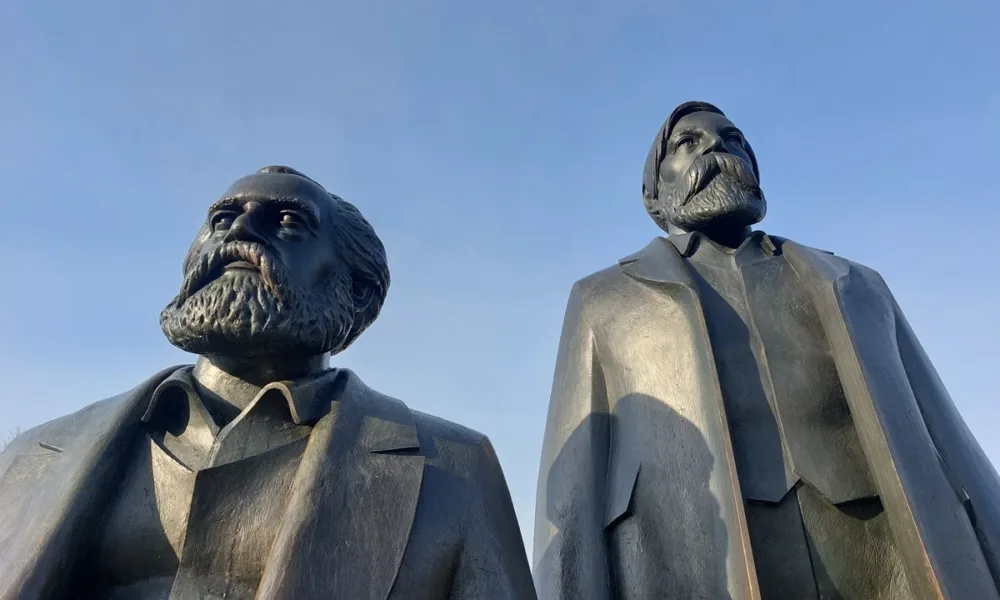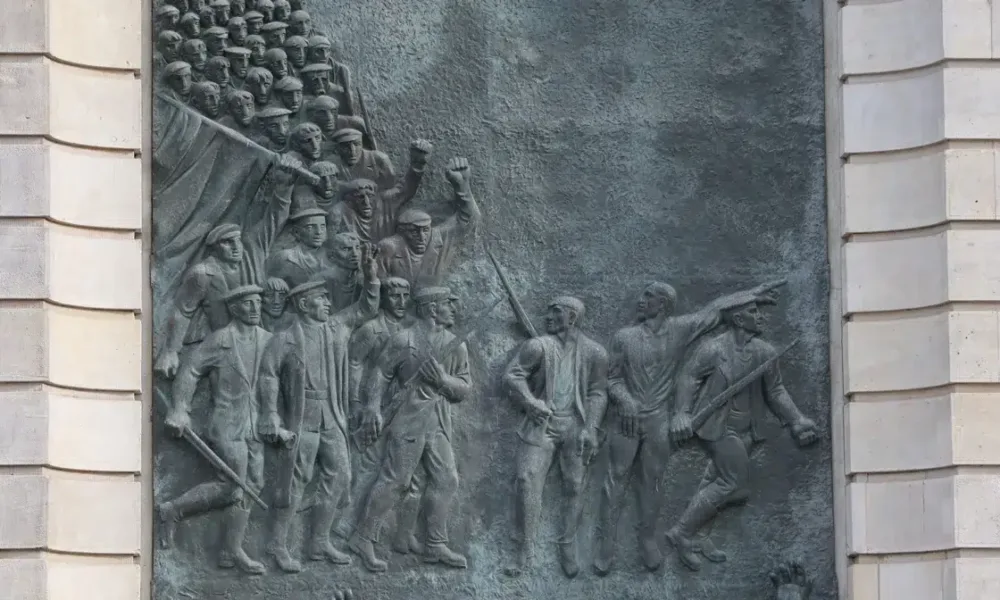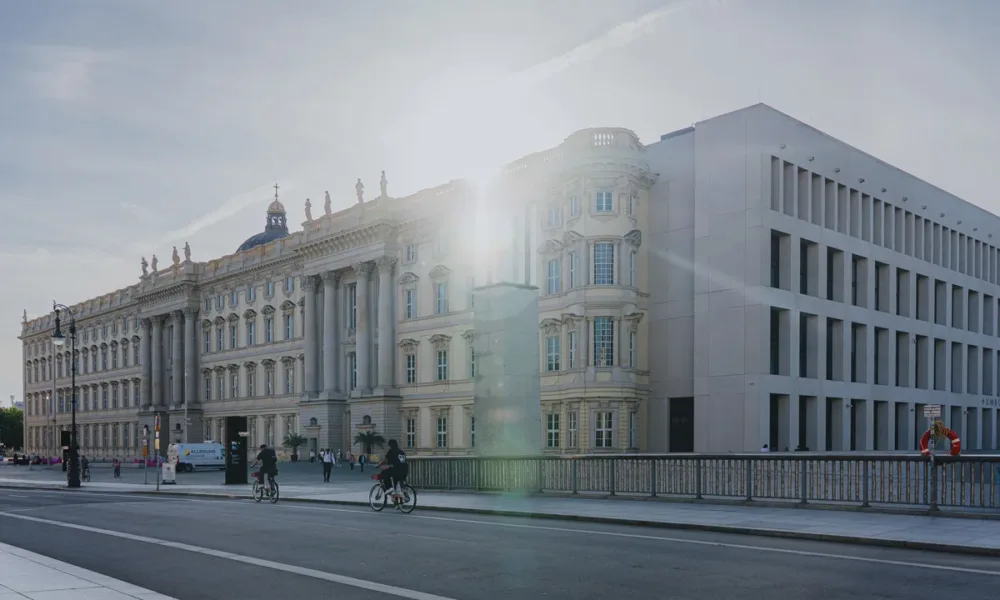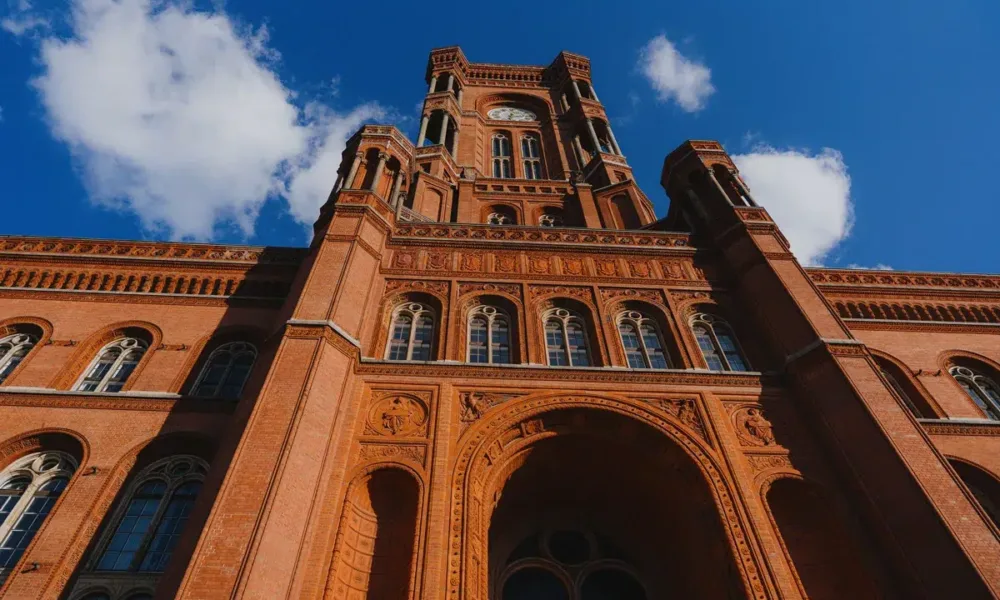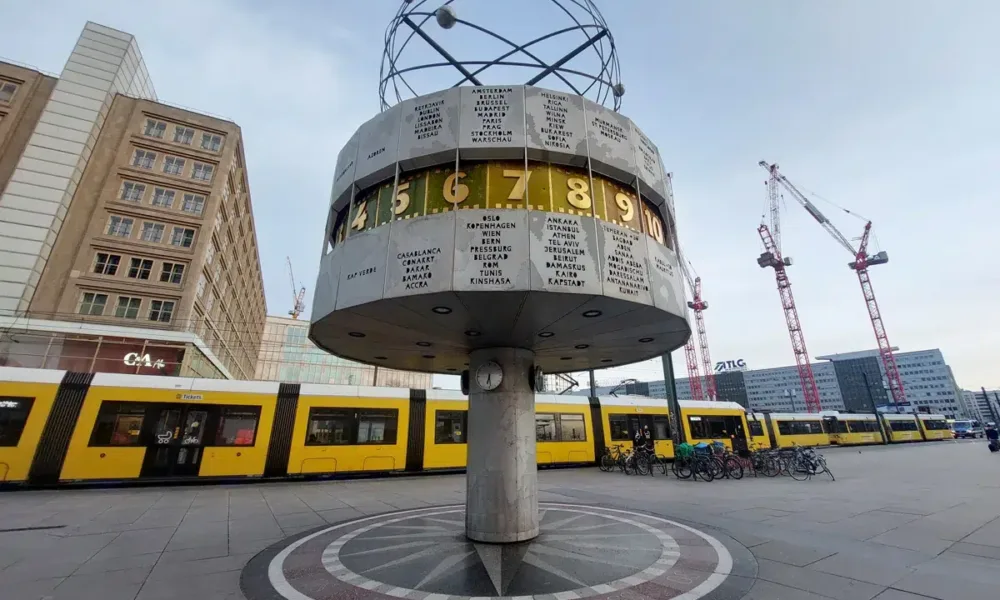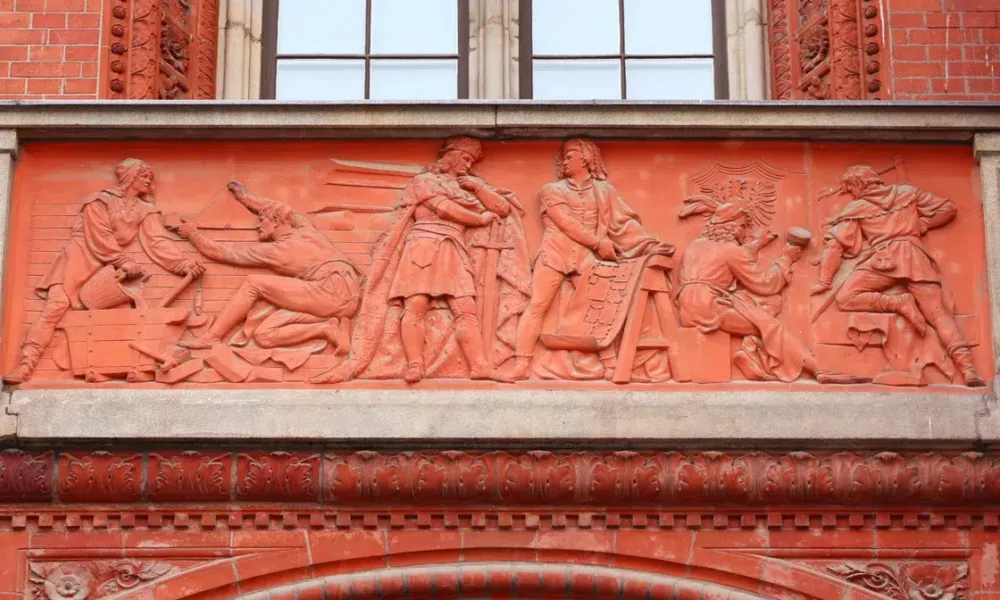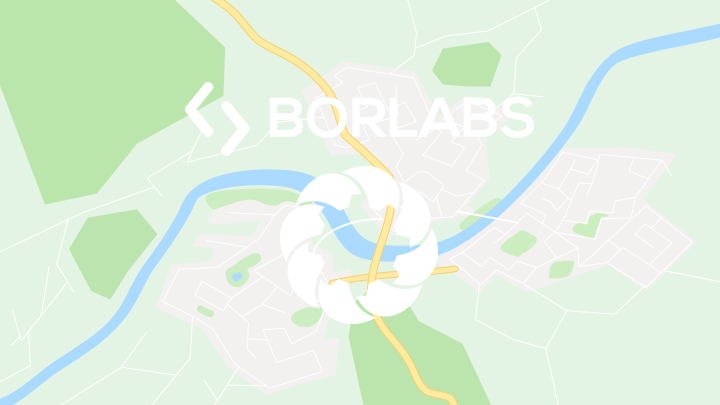Rebels, Resistance, and Revolution: Berlin’s Protest History
Follow the echoes of protest through Berlin’s streets: from the Berlin Indignation of the Middle Ages to the March Revolution of 1848, from the quiet defiance of Rosenstraße to the peaceful revolution of 1989, uncover how acts of resistance shaped the city’s history.
Price + VAT 19%:
25,00 € regular
20,00 € discounted
Meeting Point:
At the sculpture “Aufbauhelferin” (bronze statue of a young woman with a shovel over her shoulder) next to the Rotes Rathaus underground station (U5), directly opposite the Red Town Hall (Rotes Rathaus). Look for our guide with the orange umbrella!
Tour in a nutshell
Few places in Berlin concentrate so much history as the stretch between the Berlin Palace and Alexanderplatz. In this compact area, we trace 800 years of the city’s past — from its medieval foundations to the upheavals of the 20th century — uncovering how power, protest, and politics shaped the capital. Along the way, we discover four defining moments of resistance: the Berlin Indignation, the March Revolution of 1848, the Rosenstraße protest of 1943, and the Peaceful Revolution of 1989. At each stop, we connect stories of rebellion and courage with the landmarks that witnessed them, from palaces and churches to memorials and squares. We also encounter some of Berlin’s most iconic sights — the Red Town Hall, St. Mary’s Church, the TV Tower, and the World Clock. More than just architectural highlights, these places become stages where citizens demanded freedom, justice, and change, leaving behind a legacy that defines the city to this day.
Need To Know Before You Go
Duration: Approx. 2 hours
Group Size: Maximum 15 participants (larger groups on request; only bookable as a private tour)
Pets: Well-behaved dogs on a leash are welcome, provided they do not disturb the group. Service animals are always allowed.
Reviews
This was just the most fantastic walking tour. Martina is a natural historian and a brilliant tour guide—it was a really small group and this felt like having a personalised tour with the most astoundingly knowledgeable and enthusiastic guide. It was so refreshing to get a history of Berlin which went beyond the twentieth-century, and I found the use of the Alexanderplatz area really inventive, too—I usually hear it dismissed but there is so much to see if you know where to look.
“Protest history in Alexanderplatz” – having lived in Berlin for a while, I was curious about this tour – yes, there are lots of protests there nowadays, but when did it begin? Martina takes us through over 500 years of history and her knowledge and enthusiasm transcends any expectations one might have for the tour. I completely recommend a tour with them the next time you are in Berlin. What a gem! We loved it!
This is not just an ordinary tour from one spot to another. “Beyond and Beneath” will take you on an exciting adventure with a story about history of medicine, protests and other topics that have shaped Berlin and Germany.
Want to know more?
We begin at the Red Town Hall, where we see the Chronicle in Stone — a frieze that brings Berlin’s past to life, from its medieval foundations to the founding of the German Reich in 1871. Just steps away, at the site of the Berlin Palace, we uncover the story of the Berlin Indignation of 1448, when Berliners flooded the building site to resist the new Hohenzollern ruler, Friedrich II “Irontooth”. The protest was crushed, but this act of defiance became a symbol for later generations.
We then step onto Schlossplatz, where the March Revolution of 1848 shook the city. Inspired by the ideals of liberty, equality, and fraternity carried across Europe after the French Revolution, Berliners took to the streets. The middle classes demanded civil rights and free elections, while the working classes called for better living and working conditions. Barricades filled the city, battles raged for days, and hundreds were killed — but the spirit of 1848 lived on.
At Rosenstraße, we stand where hundreds of women defied the Nazi regime in 1943. For a week, they braved the winter cold to demand the release of their Jewish husbands, staging the only public protest in Germany against the Final Solution. Here we see the striking Block of Women monument and the foundations of the Old Synagogue, reminders of courage and loss in the heart of Berlin.
Finally, we follow the path of the Peaceful Revolution of 1989. We learn how smaller acts of dissent — like September’s daring T-shirt protest — swelled into mass demonstrations at the World Clock and culminated in the historic rally of November 4th at Alexanderplatz. Just days later, the Berlin Wall fell, and the dictatorship collapsed.
On this tour, we connect these four defining protests across 800 years of history. We discover how Berlin’s streets — from palace squares to hidden courtyards — became stages where ordinary citizens demanded freedom, justice, and change, reshaping the city’s destiny.
